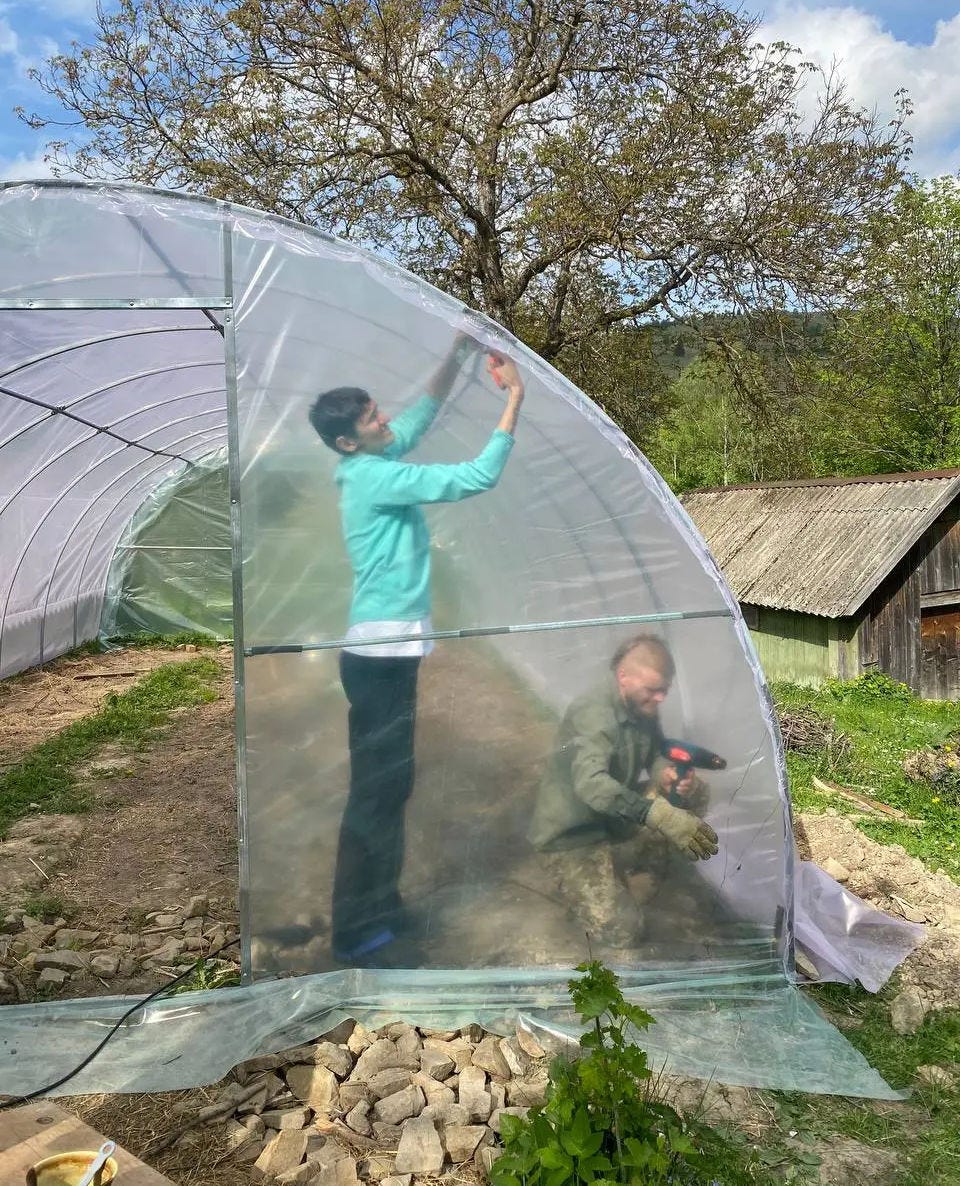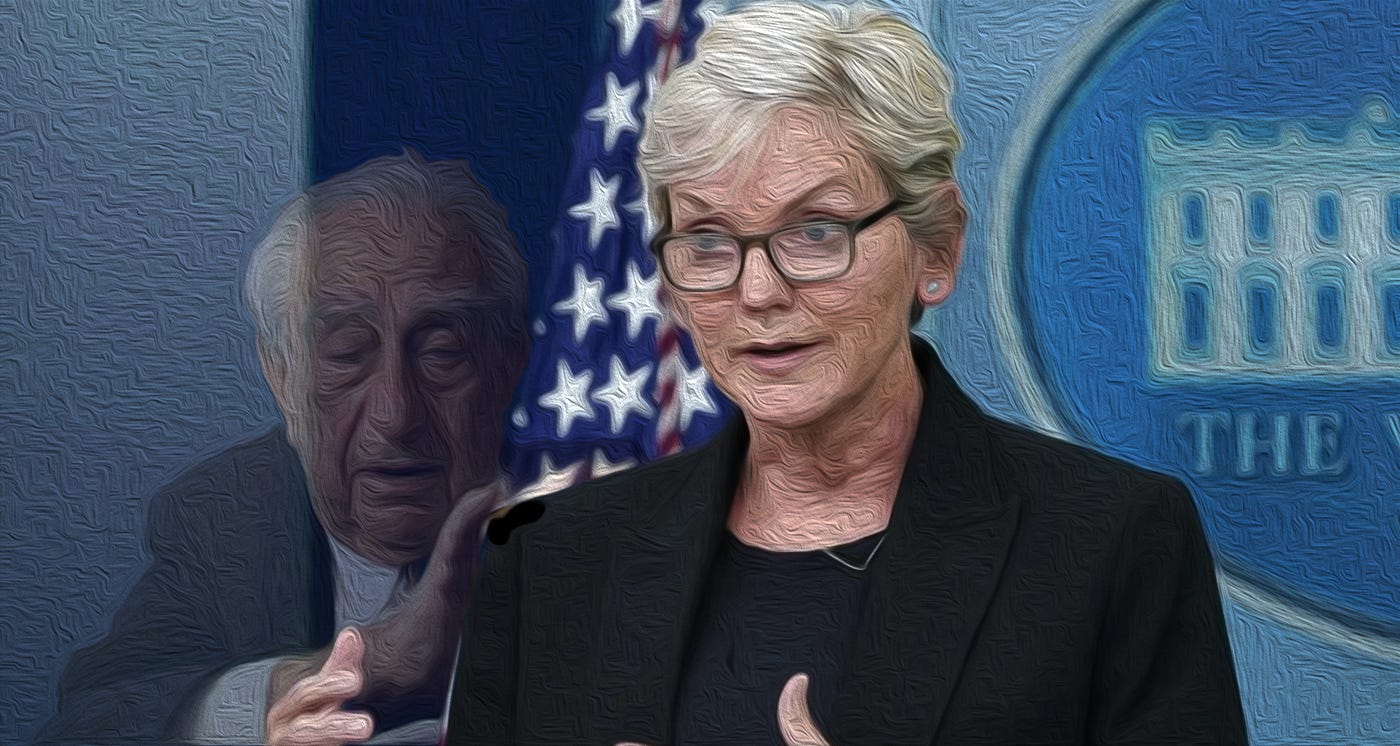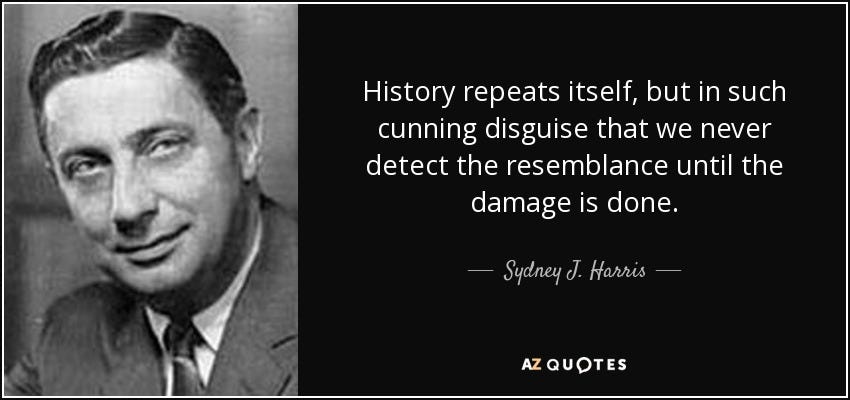In his farewell address, Dwight D. Eisenhower warned of the “military-industrial-congressional complex” where one hand fed the other in a vicious cycle of self-aggrandizement at public expense. Of the expenses paid since 1960, none has been dearer than the habitable climate of Earth.
In 2022, the US added 55 billion Watts of solar cells, the equivalent of 55 new nuclear power reactors. They were constructed in weeks, not decades. They will not require Russian uranium. They will cost one-twentieth of a similar capacity addition by nuclear. They are cheaper than oil, gas or coal.
In 1970, many of us, myself included, were saying this could be possible. We said it could happen before 1980. We were heaped upon with “freeze in the dark” ridicule. The National labs, flagbearers for Ike’s M-I-C complex, won the argument. They poured billions into nukes (Price Anderson waiver of liability for catastrophe; free fuel enrichment; free waste disposal; regulatory capture; etc.) and erected barriers to solar (no grid ties; expensive tariffs; no subsidies; scant public research).
Today solar is the cheapest form of energy (as we had predicted) while nukes are the most expensive (as we had warned)—many times the cost per kilowatt with subsidies removed.
After writing last month about artificial trees, I tweeted, rhetorically, how could it be that we could be spending billions of dollars and euros on a solution to climate change that could never scale? And the answer, which should have been obvious had I taken a moment, was: Edward Teller. We have been pwned.
Pwned (pəʊned) vb.: to defeat an opponent in a convincing and humiliating fashion. Etymology:
from corn pone, an ignorant southerner; rustic; unsophisticated;
a simple keyboard error, p being next to o on a standard QWERTY keyboard;
a code error from World of Warcraft (2004), when the message “X has been owned” should have been displayed but instead it said: “X has been pwned” carried viral on FidoNet, a system created in the 1980s for exchanging emails or text on digital bulletin boards, where pwn slowly transformed into an insult.
Direct Air Capture, Small Modular Reactors, and Fusion Energy—all are pwnings of solar by the National Laboratories, set in motion by Edward Teller.
National Labs make some sense if you are trying to solve some gargantuan problem that humanity faces—it would be good to have one for climate change, for instance—but today they mainly exist to keep engineers and physicists fully employed.
It is easy for the labs to lobby their funders, ultimately taxpayers, for ungodly sums for national security reasons, to prevent a brain drain, to advance basic science—even if the work being proposed is not only useless but mindlessly destructive, as long as it costs a lot and employs millions of little Edward Tellers. It will be good for the economy and will advance the cause of democracy, right?
History Rhymes
Edward Teller is commonly thought of as the “father of the hydrogen bomb” although he did not like the sobriquet. Born in Hungary in 1908, Teller came to the United States in the 1930s as one of the many so-called "Martians", physicists being rescued from Europe to join what would become the Manhattan Project that developed the first atomic bomb. After the war, having successfully pwned his rival, Robert Oppenheimer, as a pinko, Teller co-founded the Lawrence Livermore National Laboratory, and was its director for many years. He was author of the Red Scare, the Cold War expansion of nuclear arsenals, the Reagan “Star Wars” Strategic Defense Initiative, posthumously the Trump Space Force, and some harebrained plans that thankfully never came to fruition, such as nuclear-powered airplanes and a plan to excavate an artificial harbor in Alaska using H-bombs.
In a recent Pugwash podcast, Professor Frank von Hippel, Co-Director of the Science and Global Security program at Princeton, explained how Teller was so masterful at pwning presidents and secretaries of Energy and Defense. In the 1990’s, von Hippel was an advisor to President Clinton, and later Obama. In the ‘80s, he advised Gorbachev on how to wind down the Soviet nuclear threat. He reveals that Reagan and Gorbachev had agreed, mano a mano at the Reykjavik summit, to eliminate nuclear weapons from the face of the Earth only to have Reagan backpedal when the weapons labs balked. Reagan was pwned. Von Hippel tells how it later went during the Clinton years:
… the emphasis has been on energy but the research really was done for nuclear weapons design purposes … and the issue was a Nuclear Weapons Test Ban and where the weapons lab directors were insisting that they needed to do 15 more tests… there were reasons of safety or reliability that required them.
And the labs presented the tests that they wanted to do in this meeting that was called by the Secretary of Energy [Hazel Henderson] and I was not convinced so I brought along a retired weapons designer who was also not convinced. And it turns out the Secretary of Energy wasn't convinced either.
… And one of them [the directors] said, well if you would give us as much money for not testing as you've been giving us for testing we might be able to see it your way. And so that was the beginning of the science-based stockpile stewardship program and it was basically the budgets—some billions of dollars a year—that were offered to the weapons labs basically to do what they wanted.
This month’s issue of Wired magazine gushes over one outcome:
In December 2022—a solid century since physicists first identified fusion as the source of star power—American scientists at the National Ignition Facility in Livermore, California, where ignition is a way of life, had a breakthrough. They’d aimed 192 lasers at the inside of a pearl-sized gold can called a hohlraum, creating a radiation bath that heated up the outside of a peppercorn-sized spherical nubbin of hydrogen coated in diamond in the center of the little can.
Atoms flew off the nubbin, forcing it to implode at a speed of nearly 400 kilometers per second—about four times a bolt of lightning. This created 100 million-degree plasma under hundreds of billions of atmospheres of pressure—a gas so hot that electrons were freed from atomic nuclei. At 1:03 am on December 5, humanity hit the threshold for fusion ignition in a lab. The first flash of a handmade sun. Though it blinked out rather quickly, after less than 100 trillionths of a second, the reaction created 3.15 megajoules of energy when a mere 2.05 went in—a glorious 150 percent return on investment.
In his Save the World podcast interview, von Hippel explained how the National Ignition Lab got its start:
Those different labs chose different things. The weapons design labs wanted supercomputers. … What Livermore National Lab got was this National Ignition Facility that made the news with the fusion breakthrough which cost 3.5 billion…. The purpose of it is to create fusion explosions on a miniature basis to train weapons designers and also to test the computer codes…. Basically what they've been trying to do is create a fusion explosion with a yield of about a hand grenade. They've been struggling with this for decades now. They built huge lasers and concentrated them down on a tiny millimeter size pellet of heavy hydrogen Isotopes of deuterium and tritium and they've been trying to ignite these little pellets for decades now and they finally got to the point where [for 80 nanoseconds] they got as much energy out of of the pellet from fusion energy as they put into it from laser energy and that was a breakthrough.
To get to a power plant is an enormous, enormous extrapolation. You'd have to do this many times a second—hundreds of times a second. You'd have to have affordable lasers that would do this repeatedly many hundreds of times a second and in the end, whether that would compete with other sources of energy is a stretch. Even a very simple nuclear power plant can't compete with solar and wind power anymore, so whether this extravagant contraption could is extremely unlikely.
I watched the press conference where US Energy Secretary Jennifer Granholm took to the stage and announced this world-changing breakthrough with visions of unlimited energy that would have no climate consequences. I could barely fathom how people could be so gullible as to believe it. Even when one of the lab directors got up and said that the breakthrough would really help their weapons research, apparently no-one saw through the ruse. Astonishing.
Wired’s head exploded in technocornucopian orgasm:
Fusion will, of course, rescue the environment and decarbonize planet Earth in a cool afternoon. It will also—don’t stop me now—render irrelevant all the dead-eyed petroleum kleptocracies and trade wars and real wars waged in their name. When energy can be produced anywhere, with common household ingredients, authoritarian states will no longer derive despotic authority by accidents of geography, but will, whoosh, become secular democracies, the better to share fusion-reactor tips and tricks in happy glasnost and savor the collective joy and peace of a burning, flooding planet restored to tranquil shades of green and blue.
Even leaving aside the Shangri-la, fusion is exciting here and now.
That 80-nanosecond burst was estimated to have cost $3.5 billion, which is likely an underestimate. It resulted in nuclear waste—principally tritium, which will linger for some 240 years as a lethal isotope. Gordon Edwards, President of Canadian Coalition for Nuclear Responsibility, replied to von Hippel that:
I think we have been manipulated and a lot of people fell for it because you don't think that the Secretary of Energy is going to go on public airwaves and simply give a false account of what actually happened. And that's what we're seeing. I think that the the scramble for money for fusion research, and even for fission research in terms of small modular reactors, is impelling people to misrepresent their product as a way of of getting governments to invest in it and the public to support it.
Question Authority
The China lab leak theory—was it “most likely” or “low confidence?” On February 26, the Energy Department held a press conference to announce that the coronavirus pandemic was “most likely” caused by an accidental laboratory leak in Wuhan, China. Given that scores of international expert virologists, zoologists and geneticists sent to Wuhan have instead concluded that genetic sequencing ruled that possibility out, the DoE announcement came as a surprise. Peer-reviewed 2022 studies used genetic swipes to pinpoint a specific stall at the Wuhan market where the coronavirus likely jumped from an animal into people.
And a genetic analysis estimates the time, within weeks, when not just one but two spillovers occurred. It calculates that the coronavirus jumped into people once in late November or early December and then again few weeks later.
— M.Doucleff, What does the science say about the origin of the SARS-CoV-2 pandemic? NPR February 28, 2023
The director of the Wuhan Lab’s bat virus research, notified of SARS-CoV2, rushed back to the Lab to see if they had any coronaviruses there that could match the strain in the market. A lab leak was her worst fear. She got the genome sequence from Johns Hopkins and immediately ran it through her database. Then she breathed a great sigh of relief. This new one was not one of theirs.
Was the DoE’s “most likely” announcement from virologists? No. It came from a US National Laboratory specializing in biological warfare, with an annual budget coming from countering threats of foreign biological laboratories. Pushed by reporters, the DoE Laboratory conceded their conclusion had “low confidence.”
Jake Sullivan, the national security adviser, declined to confirm the intelligence. But he said President Biden had ordered that the national labs be brought into the effort to determine the origins of the outbreak so that the government was using “every tool” it had.
Biden’s Director of National Intelligence announced in October 2021 that four other intelligence agencies and the National Intelligence Council concluded that the virus most likely emerged through natural mutation. That matched the March 2021 report by the W.H.O. that said it was “extremely unlikely” that the virus came from a lab. And yet, if you unpack the Biden response, it signals bigger budgets for the bioweapons labs. The ghost of Edward Teller is clapping its hands with joy.
Small Modular Reactors and Fusion Grenades
In 1968, the Nuclear Nonproliferation Treaty (NPT) placed legal obligations on the 5 signatories with H-bombs to get rid of their weapons (Article 6). The 5 states began dismantling in 1970. The US reduced from 64000 warheads to 15000 but stopped at the point they could destroy the world by nuclear winter 10 times over and has since sustained their arsenal there. There are now 191 signatories to the NPT. Von Hippel continues:
Pierre Elliott Trudeau was the only political leader that I'm aware of who publicly spoke out against Insanity of the NATO policy on nuclear weapons. He's also the one in 1978 before the U.N General Assembly who gave his Strategy of Suffocation speech, which was, that if we're serious about getting rid of nuclear weapons then there has to be a strategy of suffocation—choking off the vital oxygen on which the nuclear arms race feeds. And that includes the primary nuclear explosive materials. We shouldn't be producing plutonium and highly enriched uranium if we want to have a nuclear weapons-free world.
***
Rather than disguising a fundamentally military project like the Lawrence Lawrence Livermore Lab experiment as a peaceful energy thing when in fact it's a military maintenance project, we have to restart the debate over nuclear weapons policy.
And thus we all drift, pwned like Granholm, stocked to the gills with horrific weaponry and new threats to unleash it out of MRGA (Make Russia Great Again) rage. Every new reactor built is both a bomb component factory and a wartime target. It makes plutonium. We gave up a critical 50 years chasing the peaceful atom myth—unlimited energy that's safe, clean, too cheap to meter—when we could have had cheap, safe, clean renewable energy with no explosive potential and a tamer climate all that time. Maybe it is time we stop listening to Edward Teller’s ghost and listened to Justin Trudeau’s dad, Maybe it's time we did something different for a change.

Meanwhile, let’s end this war. Towns, villages, and cities in Ukraine are being bombed every day. Ecovillages and permaculture farms have organized something like an underground railroad to shelter families fleeing the cities, either on a long-term basis or temporarily, as people wait for the best moments to cross the border to a safer place, or to return to their homes if that becomes possible. There are still 70 sites in Ukraine and 300 around the region. They are calling their project “The Green Road.”
The Green Road is helping these places grow their own food, and raising money to acquire farm machinery and seed, and to erect greenhouses. The opportunity, however, is larger than that. The majority of the migrants are children. This will be the first experience in ecovillage living for most. They will directly experience its wonders, skills, and safety. They may never want to go back. Those that do will carry the seeds within them of the better world they glimpsed through the eyes of a child.
Those wishing to make a tax-deductible gift can do so through Global Village Institute by going to http://PayPal.me/greenroad2022 or by directing donations to greenroad@thefarm.org.
There is more info on the Global Village Institute website at https://www.gvix.org/greenroad and read this new article in Mother Jones.
The COVID-19 pandemic destroyed lives, livelihoods, and economies. But it has not slowed climate change, a juggernaut threat to all life, humans included. We had a trial run at emergency problem-solving on a global scale with COVID — and we failed. 6.8 million people, and counting, have died. We ignored well-laid plans to isolate and contact trace early cases; overloaded our ICUs; parked morgue trucks on the streets; incinerated bodies until the smoke obscured our cities as much as the raging wildfires. The modern world took a masterclass in how abysmally, unbelievably, shockingly bad we could fail, despite our amazing science, vast wealth, and singular talents as a species.
Having failed so dramatically, so convincingly, with such breathtaking ineptitude, do we imagine we will now do better with climate? Having demonstrated such extreme disorientation in the face of a few simple strands of RNA, do we imagine we can call upon some magic power that will change all that for planetary-ecosystem-destroying climate change?
As the world emerges into pandemic recovery (maybe), there is growing recognition that we must learn to do better. We must chart a pathway to a new carbon economy that goes beyond zero emissions and runs the industrial carbon cycle backward — taking CO2 from the atmosphere and ocean, turning it into coal and oil, and burying it in the ground. The triple bottom line of this new economy is antifragility, regeneration, and resilience. We must lead by good examples; carrots, not sticks; ecovillages, not carbon indulgences. We must attract a broad swath of people to this work by honoring it, rewarding it, and making it fun. That is our challenge now.
Help me get my blog posted every week. All Patreon donations and Blogger or Substack subscriptions are needed and welcomed. You are how we make this happen. Your contributions are being made to Global Village Institute, a tax-deductible 501(c)(3) charity. PowerUp! donors on Patreon get an autographed book off each first press run. Please help if you can.
#RestorationGeneration
Thank you for reading The Great Change.







